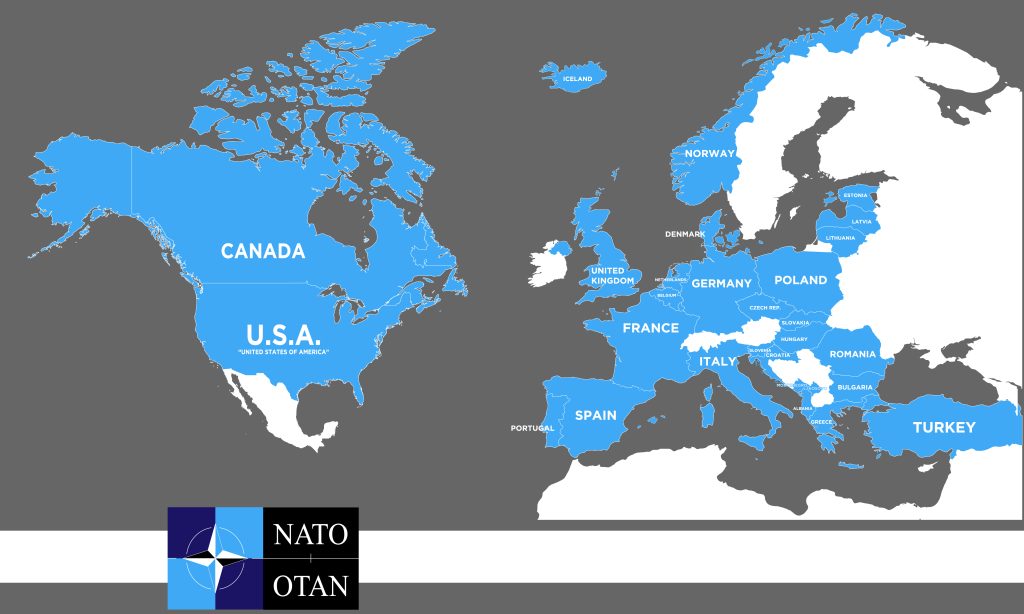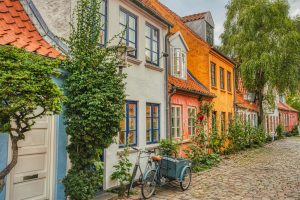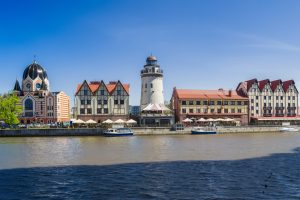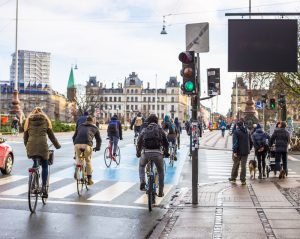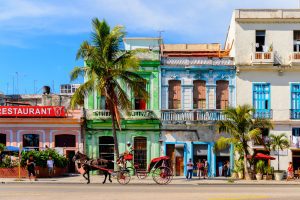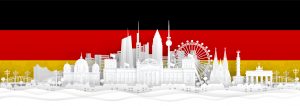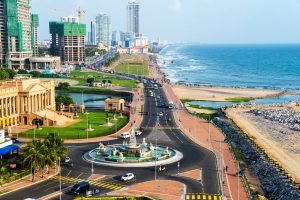Denmark is in Northern Europe and is a Nordic country that lies north of Germany, southwest of Sweden, and south of Norway.
This Scandinavian country includes an archipelago of 443 islands and the peninsula of Jutland. The capital of Denmark is Copenhagen.
Denmark is a highly developed and industrialized nation. As a result, the standard of living is high.
The residents enjoy high-quality education, democratic governance, and health care.
In addition, it is an LGBT-friendly nation.
Denmark is an active member of the United Nations, NATO, OECD, Nordic Council, and OSCE.
The government is invested in the nation’s progress and the people’s well-being.
Many attribute the concept of Vikings, biking, and happiness to Denmark. However, there are many other exciting things about this prosperous nation.
Read on to find out cool facts about Denmark.

Table of Contents
General Facts About Denmark
- Total population: 5,834,582
- Land Area: 42,943 km2
- Capital: Copenhagen
- County Code: DK
- Country Number/Prefix: +45
- Time Zone: UTC/GMT +2 hours
- National Day: (No official national Day) June 5-constitution day
- Official Language: Danish
- Currency: Krone
- Highest mountain: Mollehoj 171 meters (561 ft.)
- Biggest lake: Arreso, 40 square kilometers
- Government: Parliamentary democracy
- Official website: https://denmark.dk/
- Primary Minister: Mette Frederiksen
- Member of NATO: Yes
- Member of EU: Yes
- National song: Der er et yndigt land
Quick Denmark Facts
- Denmark is a bicycle nation. People use bikes as a means of transportation regardless of the weather
- The first Ministry of Environment around the world was established in Denmark in 1971
- The Danish monarchy is more than a thousand years old; one of the oldest in the world
- The Parliament of Denmark is termed “Folketinget.”
- Denmark produces about 41% of its energy from wind; more than any other country in the world
- Denmark is a sea country; you will always be within 50 km of the sea
- Denmark is home to five national parks that hold unique history and culture
- Danes are among the happiest people in the world
- Shipping is the primary means of transporting goods
- The Danish flag, Dannebrog, is the world’s oldest flag
- Denmark is the home of Handball
- The nation is one of the least corrupt in the world
- Hans Christian Andersen, the author of “The Ugly Duckling” and “The Little Mermaid,” is a Dane
- Fried pork served with potatoes and parsley sauce is Denmark’s national dish
- The nation’s national bird is the swan
- Denmark became the first nation in 2017 to appoint an Ambassador for Tech
- Nina Bang, the Minister of Education, appointed in 1924, was the first female minister in the world
- Denmark’s first constitution was signed on the 5th of June 1849, which makes the national constitution day
- Denmark is the first country to allow same-sex marriage with equal rights to the partners
- Crossing the road without waiting for the green light can earn you a jaywalking ticket.
Interesting facts about Denmark
1. Denmark is a happy country
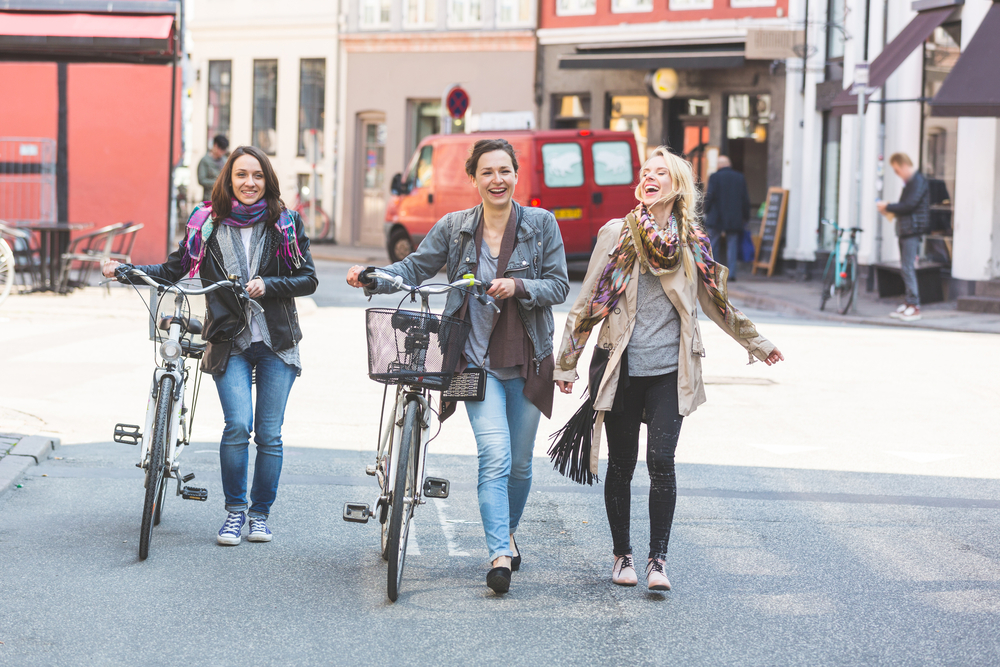
Denmark has always been among the top happiest country in the world. According to Forbes, Denmark is the second happiest country next to Finland.
So, if you are feeling a little sad, you may want to visit Denmark to partake in the boundless joy.
2. Denmark has high taxes
The tax rate in Denmark is one of the highest in the world. About 45% of the income is given back to the government as tax.
However, a study reports that about 90% of residents in Denmark are happy to pay the tax. This may be because of the free and quality education and the healthcare system.
Therefore, the tax money is well spent on the well-being of the nation.
3. Denmark has clean drinking water
One interesting fact about Denmark is that it has drinkable tap water. Denmark has some of the cleanest tap water you can find anywhere in the world.
This is not the case with many countries located in mainland Europe.
4. The famous LEGO originates from a Dane
A Danish carpenter, Ole Kirk Christiansen, invented LEGO, which is popular all over the world. The company started with wooden toys.

Things changed in 1947 when they turned to the more fun, colorful, and iconic plastic bricks. LEGO is derived from the phrase “leg godt,” which means, “play well.”
Since the introduction of the colorful plastic brick, the company has evolved into a multi-billion-dollar company.
LEGOs are everywhere from clothing, games, movies, and theme parks.
Denmark is a county that chooses sustainable options. Therefore, LEGO plastic is now made from plant materials.
This makes LEGOs even cooler!
5. Denmark is a liberal nation
Denmark is one of the few liberal nations in the world. It is a progressive country where people are not afraid to express their opinion.
In addition, Denmark was one of the first nations to legalize same-sex relationships in 1989. The nation is a firm supporter of the LGBQ community.
Everyone is welcome in Denmark to have a chance to be happy.
6. A sustainable nation
Denmark is a country that thrives by protecting the environment. It is ranked 2nd in the list of sustainable nations globally.

It is no surprise that the Danes are highly eco-conscious. Denmark is at the forefront of the production of clean energy from wind instead of depending on coal or nuclear energy.
The nation’s capital, Copenhagen, plans to reduce the city’s carbon footprint significantly. Almost everyone understands the threat of carbon to the earth.
Therefore, many countries will certainly follow suit in Denmark’s footsteps to use clean energy.
7. The name Bluetooth originates from Denmark
Harald Bluetooth (popularly known as Harold I) was the Danish King in the 10th century. The technology Bluetooth took its name from this popular king.
Harold I is famous in history because he played a central role in making Denmark one state.
The Bluetooth symbol is a combination of “B,” from Harald Bluetooth’s initial and Viking runes for “H.”
Now you know where the Bluetooth symbols come from.
8. A bridge connects Denmark and Sweden
Given the nasty history between both countries, one will be surprised there is a bridge between them.
The Oresund Bridge was commissioned in 1999 and spanned a distance of 16km.
This bridge is an exceptional structure that once again highlights Dane’s creativity. It allows people to move between Denmark and Sweden in a short time.
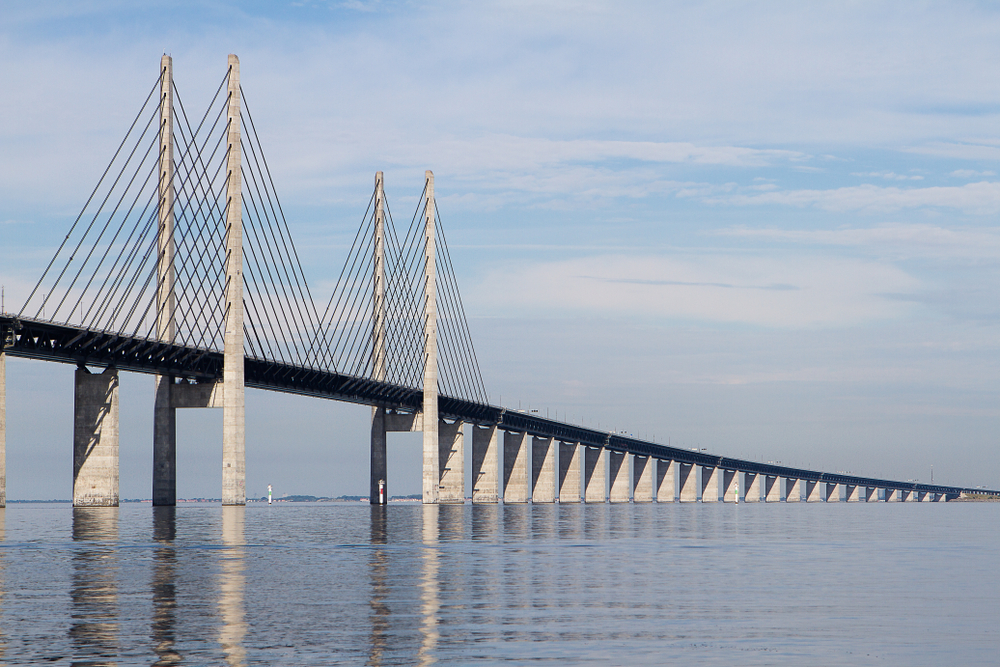
9. Inspiration for the creation of theme parks around the world
Denmark is home to the oldest amusement park in the world, Dyrehavsbakken. You can find this relic park in Jægersborg Deer Park north of Copenhagen.
The park was first open to the public in 1583 as a healing spring. However, Dyrehavsbakken has evolved to become a family theme park.
In 1843, another park (second oldest in the world), the Tivoli Gardens, started operations in Copenhagen.
These two gardens are the inspiration for the creation of various amusement parks around the globe.
Walt Disney got the idea of the Disneyland resort after visiting these historic parks.
10. The Danish language is difficult to learn
The Danish alphabet has three additional unique letters- Æ, Ø, and Å. This is primarily due to complex pronunciations and lots of silent letters.
Therefore, the Danish language is unique, although quite challenging to learn.
Denmark Flag
The flag of Denmark has two colors, red and white. Denmark’s flag has a red background with a white cross that extends to the edges.
The flag is called the Dannebrog. The country adopted this flag around the 14th century. Hence, it has become one of the world’s oldest functional flags.
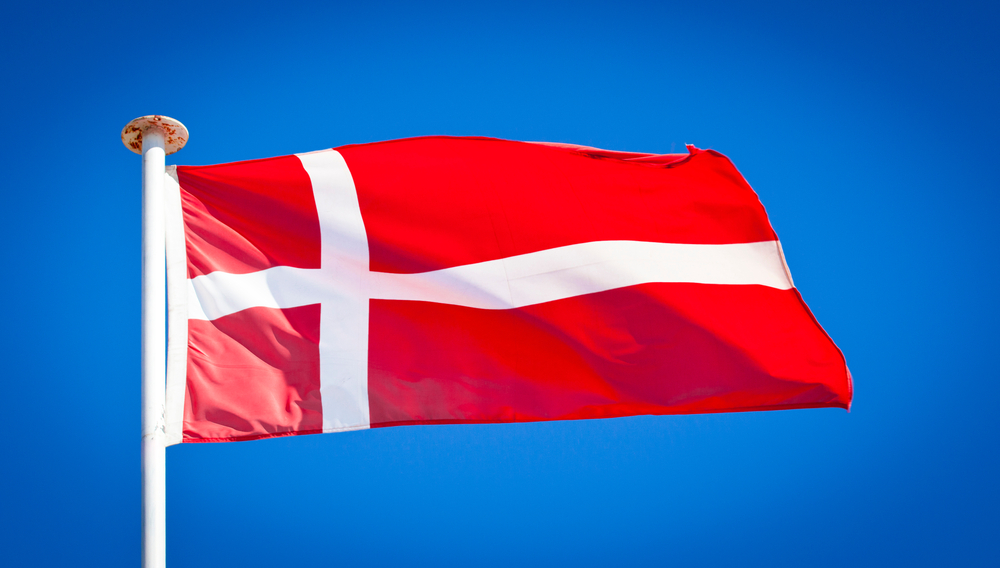
According to the Guinness World Record, the flag came to light in 1219 and has become the oldest used national flag.
A fun fact about the Dannebrog is that burning it is legal. However, it is not legal to burn the flag of another country.
Denmark on the map
Denmark is a Nordic country in Northern Europe. It is the southernmost of the Scandinavian countries, located north of Germany, southwest of Sweden, and South of Norway.
Denmark has a land area of 42,943 km square.
Most Beautiful Places in Denmark
If you are ever in need of a vacation destination, then you should consider Denmark. Apart from being one of the happiest countries in the world, it is a beautiful place.
You can enjoy a quiet or busy life while spending your days at cultural events, museums, galleries, and many more interesting places.
Here are some of the most beautiful places to visit in Denmark:
1. Copenhagen
Almost anyone who has traveled to Denmark will agree that Copenhagen, the capital, is one of the most beautiful places to visit.

You can enjoy the rich Danish culture, delicious food, and exciting nightlife here.
Popular landmarks in Copenhagen include Tivoli Gardens and the Little Mermaid statue. Other exciting places and activities are available in this city during the day and at night.
There are several cool spots, restaurants, cafes, and bars.
If you’re looking for fun, look no further than this charming city with lots of fun, food, culture, and architecture.
This city is bustling with life and energy all year round.
2. Elsinore (Helsingor)
Elsinore was once an acclaimed center for warfare and trade. However, it is now a historical destination for tourists interested in the history of Denmark and medieval architecture.
Elsinore is home to Kronborg, a castle that gained global popularity due to Shakespeare’s Hamlet.
Visitors can appreciate the amazing views of Sweden from the coast and an ancient medieval center.
Suppose you want to experience good food and enjoy the Danish culture. Elsinore is a must-stop for you!
3. Aarhus
Aarhus is the second-largest city in Denmark. This city is lively and an excellent place to experience the culture of Denmark.
Many young people will enjoy this city with its charming architecture.
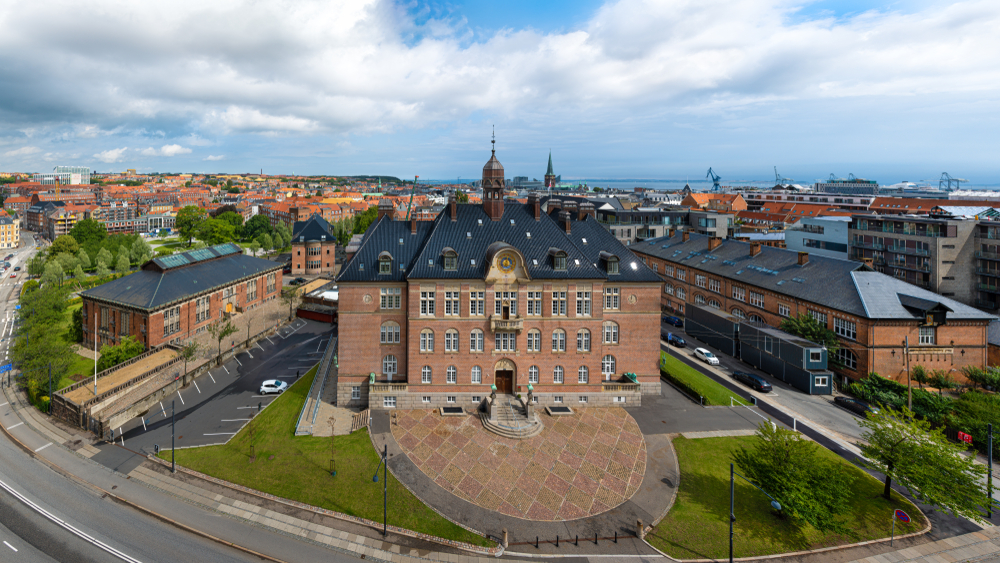
One of the oldest open-air museums in Europe, Gamle By, is located in Aarhus. Another notable location is ARoS, one of the largest museums in Scandinavia.
Those that enjoy shopping can have fun at various boutiques and stores. The foodies are not left out in this adventure, as there are lots of cafes and restaurants for them.
Another place that draws tourist attention is the Mols Bjerge National Park. The park was established in 2009 and is home to exotic lakes, forests, and beaches.
Visitors that love the outdoors will enjoy the 100km hiking trails.
4. Randers
Randers is undoubtedly one of the most beautiful cities in Denmark. It is popularly referred to as the “Venice of Denmark.”
Therefore, it is a must-visit for tourists in the country. Randers is a small city with traditional buildings and modern landscapes.
As a result, it is an excellent destination for visitors.
Individuals who love vibrant nighttime will enjoy the safe and beautiful nature of the city. Lovers often cannot resist a stroll along Randers canals.
Another exciting thing to do is enjoy the sweet Danish wine.
Additionally, it is home to one of the most beautiful zoos in Europe called Randers Regnskov. The Danish Design Museum is another exciting place you should visit while in Denmark.
5. Roskilde
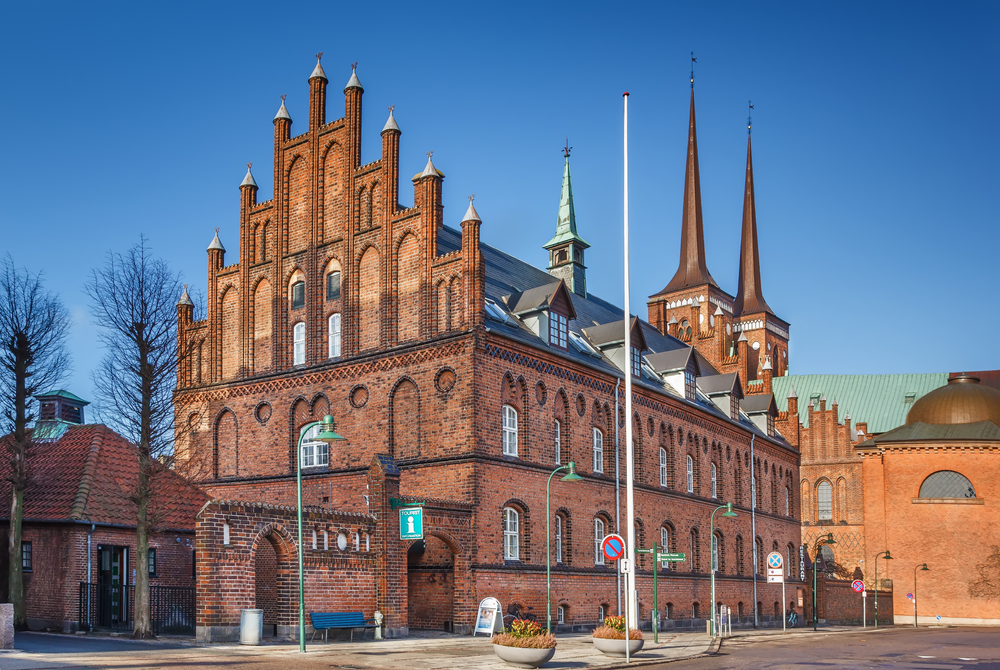
Roskilde is a seaside town with a tranquility that pleases many visitors. It is the ideal vacation destination for individuals seeking to escape big cities.
A boatyard in Roskilde holds authentic 11th-century Viking ships.
Another historical location is the 12th-century cathedral. This two-spired cathedral is the final resting place of the Danish kings and queens of yore.
Although Roskilde promises a quiet life, there are lots of options for having fun.
If you enjoy art, you can visit the Roskilde Contemporary Art Museum to have fun.
6. Skagen
Skagen is known for its natural beauty in the northern part of Denmark. It is a really popular place for tourists to visit, especially in the summer with its tall dunes, long coastline, and changing lights.
Suppose you want to experience the beauty of Denmark’s Summer with its long days and short nights.
Skagen is the best place for you.
In addition, you can explore the thrilling landscape at Rabjerg Millie. Visitors that love the waters can enjoy the views of where two seas meet in Grenen.
There is also a wide variety of delicious seafood to enjoy in this town.
If you want to escape the bustle and noise of big cities, Skagen is the perfect small village and offers a quiet and relaxing environment.
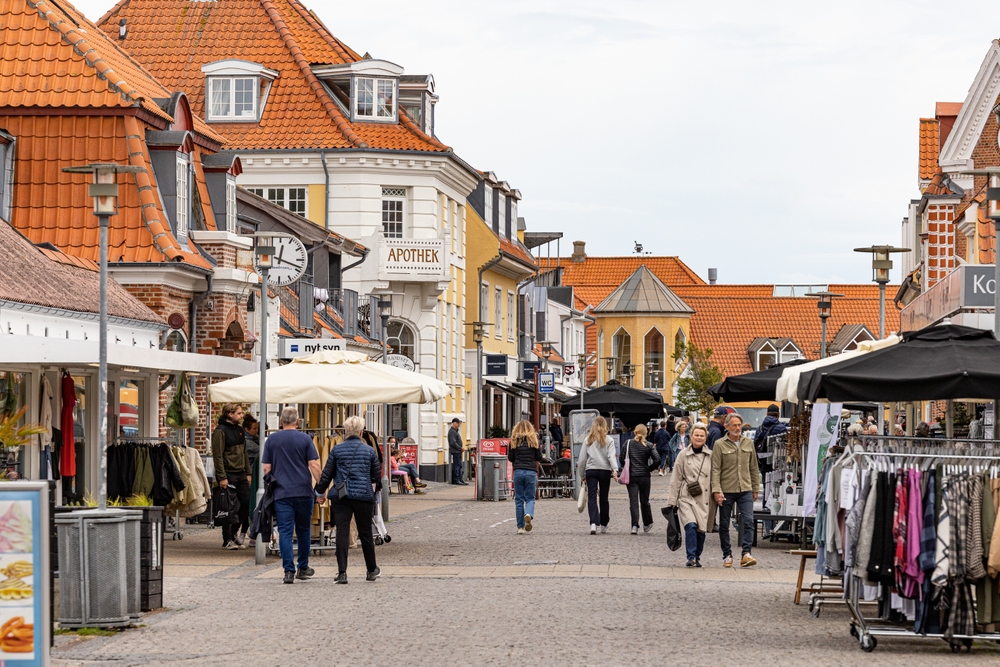
Additionally, visitors can explore the town’s museums, cafes, and shops.
7. Bornhorlon
The scenery and climate make Bornhorlon one of the most popular Islands for tourists. An interesting feature on this island is the seven unique round churches.
All the churches are places for sightseeing as it is rich in history and culture. In addition, you can also visit Hammershus Castle, the largest ruin in all of northern Europe.
This island has various landscapes, forests, rocky coastline, lakes, and sandy beaches. In addition, it is home to some of the best chefs that whip up delicious cuisines.
Some of the nation’s best beer is manufactured in the microbrewery located on Bornhorlon.
A brief History of Denmark’s war
The Kingdom of Denmark is one of the origins of the Vikings. As far back as history remembers, the Vikings loved a good battle.
They sailed from Europe to America and France in search of gold and riches. Denmark has a military history with several wars dating back to 793 AD.
Let us examine some quick history of Denmark’s wars:
The Seven Years’ War (1563–1570)
This war between Denmark and Sweden began on July 31, 1563. There was a disagreement on the right to each other’s national weapon until a war broke out.
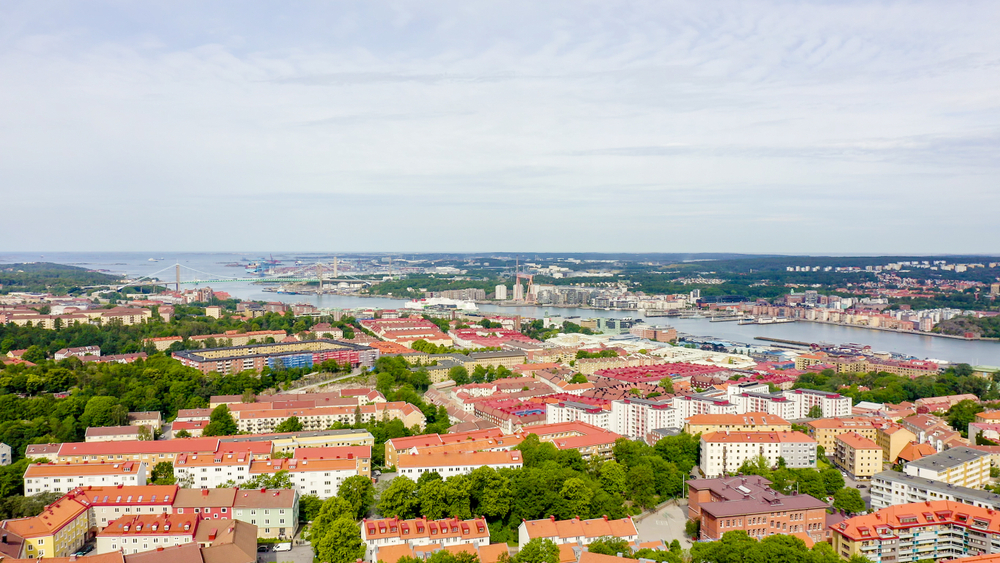
The Danish army made the first move by invading Alvsborg, Sweden.
By May 1564, a Danish fleet met a Swedish fleet between Oland and Gotland. Denmark won this battle but not without incurring some losses.
However, the Danish army once again prevailed. By the next year, the two countries met at Axtorna for another battle.
A peace treaty was agreed upon in December 1570 between Denmark and Sweden. Denmark decided to move their troops away from Alvsborg in exchange for 150.000 Daler.
The Kalmar War (1611–1613)
After some years of peace between Denmark and Sweden, there was another disagreement, which led to war.
This time, the Danish army went to war against Sweden after they tried to ruin their monopoly on trade with Russia.
The war started on the 4th of April 1611. However, Denmark swiftly defeated the Swedish army on June 11 in Kalmar.
Afterward, both countries signed another peace treaty in January of 1613. This was a short war, and Denmark became a symbol of power among the Scandinavian nations.
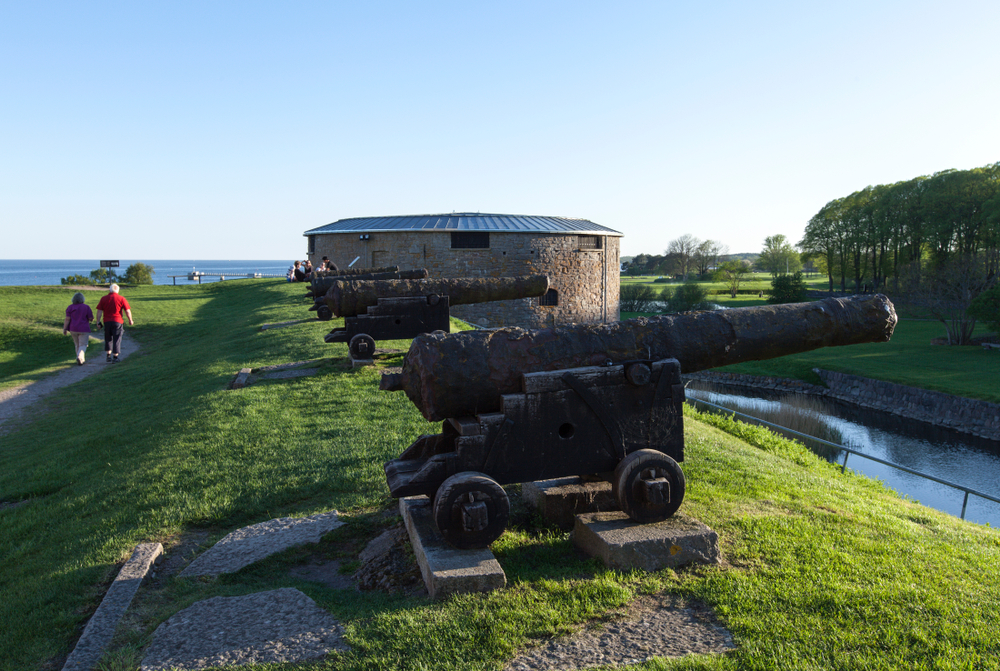
The Thirty Years War (1618–1648)
In 1618, Denmark partook in a war between Protestants and Catholics. However, the Danish Army led by Christian IV suffered a defeat in 1626.
The Danish Army suffered another loss in 1628, which forced their leader to make peace.
A huge loss for Denmark
Denmark and Sweden always found a reason to go to war within a few years of signing a peace treaty.
However, in 1658, Denmark had to relinquish control over Blekinge, Skane, and Halland. These provinces are integral to the Southernmost parts of today’s Sweden.
Also, in 1814, Norway was handed over to Sweden. Iceland became an independent nation in 1918.
Reforms and Democracy
The 1658 loss of Blekinge, Skane, and Halland made way for absolute monarchy in Denmark. The Danish king announced himself as the constitutional monarch, which gave rise to the present democratic constitution.
Therefore, the nation had a strong central government. As a result, there was the introduction of agricultural laws to make farming better.
Nevertheless, the peasant had no choice but to work on the farm for the landowners.

All of these peasant laws changed with the 1784 reforms, which gave rise to the birth of more rights for peasants.
Universal primary education was introduced to the Danish kingdom in 1814.
Moving on, there was tension over the Blekinge, Skane, and Halland borders with Germany. Therefore, Denmark had to let go of all three provinces.
As a result, there was a war between Denmark and Germany from 1848 to 1851. Denmark won the war, but the Germans were unrelenting until they secured a victory in 1864.
Denmark was not actively involved in WWI. After the defeat of Germany in World War I, the northern part of Schleswig was relinquished to Denmark.
However, the province is still occupied by the German minority.
Improvement of the Danish Economy
The end of World War I signaled a new beginning for the economy of Denmark. The cooperative farmers’ movement was established to improve agriculture.
As a result, there was a shift from a focus on grain cultivation to livestock agriculture. Furthermore, Denmark experienced an increase in the commercial production of dairy.
A social welfare state was created to help the citizens of the nation.
Although Denmark was neutral in the world war, German troops invaded the country in 1940. However, the country was quickly overrun by the German war machines.
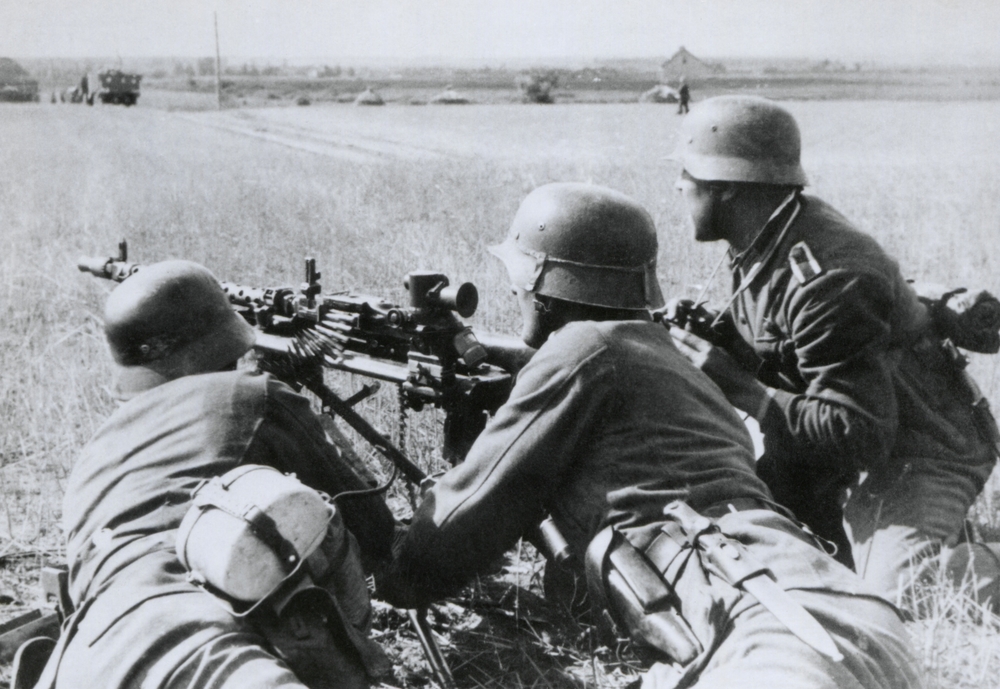
The Danish citizens formed an underground resistance to oppose the Nazi’s rule within five years of loss.
The nation finally regained freedom from its oppression on the 5th of May 1945. However, this victory was due to the assistance of the Soviet Union, the US, and the UK.
Hope and peace were finally restored to Denmark after living in oppression for five years under the Germans.
The economy of the Danish kingdom experienced growth as exports increased. As a result, the nation flourished.
Popular export goods include butter, furniture, bacon, and other agricultural produce.
During the mid-90s, the European Economic Community (EEC), whose name later changed to the European Union (EU), was at the forefront of economic partnership for the growth of European nations.
Denmark became a member of the EEC in 1972 and a founding member of the UN (United Nations).
In addition, Denmark was also a member of NATO or the North Atlantic Treaty Organization. As a result, Denmark is actively involved in fighting poverty and defending human rights globally.
Conclusion
We hope you found something new and interesting from all the facts provided. Denmark is a lovely country to reside in or visit.
The Danish Kroner is the official currency of Denmark; unlike most European Union countries, it doesn’t use the Euro.
If you love the sea or enjoy water games, Denmark may be the ideal vacation for you because you are always within 48 km of the sea.
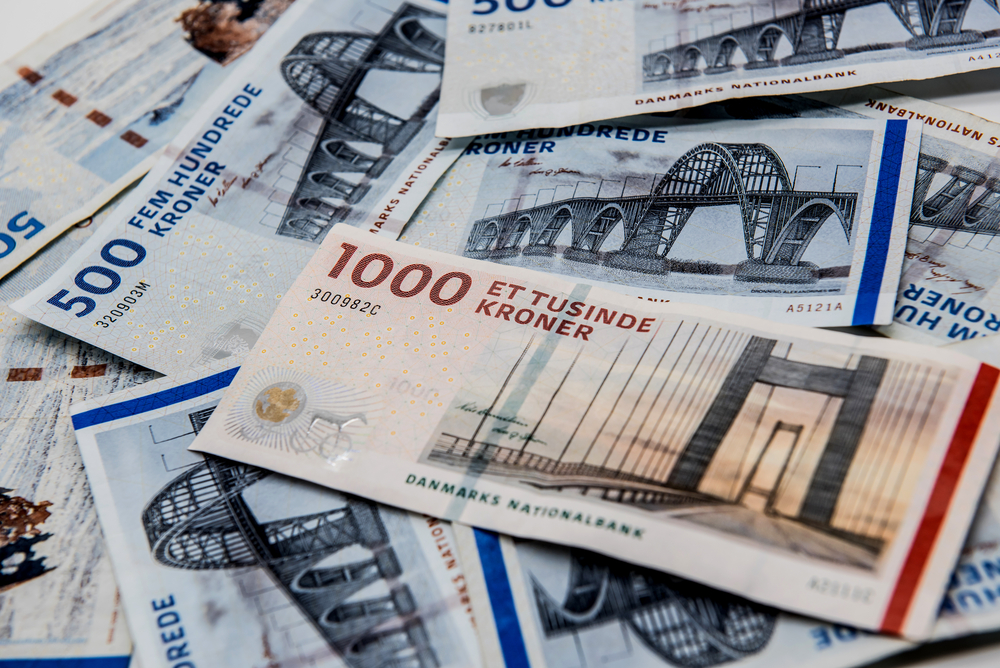
In addition, there are about 144 islands in Denmark. However, you can only find people living in only 76 of them.
If you are a lover of the earth, Denmark is a cool place for you as Samso and Bornholm are the most sustainable islands in Europe.
In addition, you can find Vestas, the biggest global manufacturer of the turbine in Denmark.


